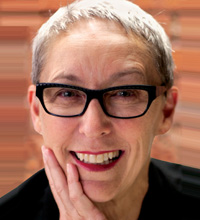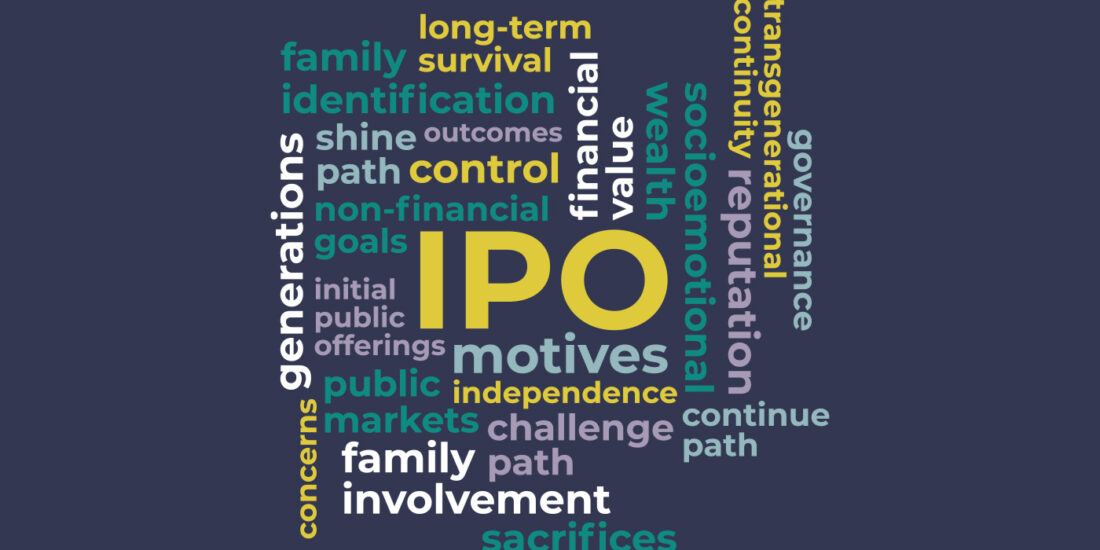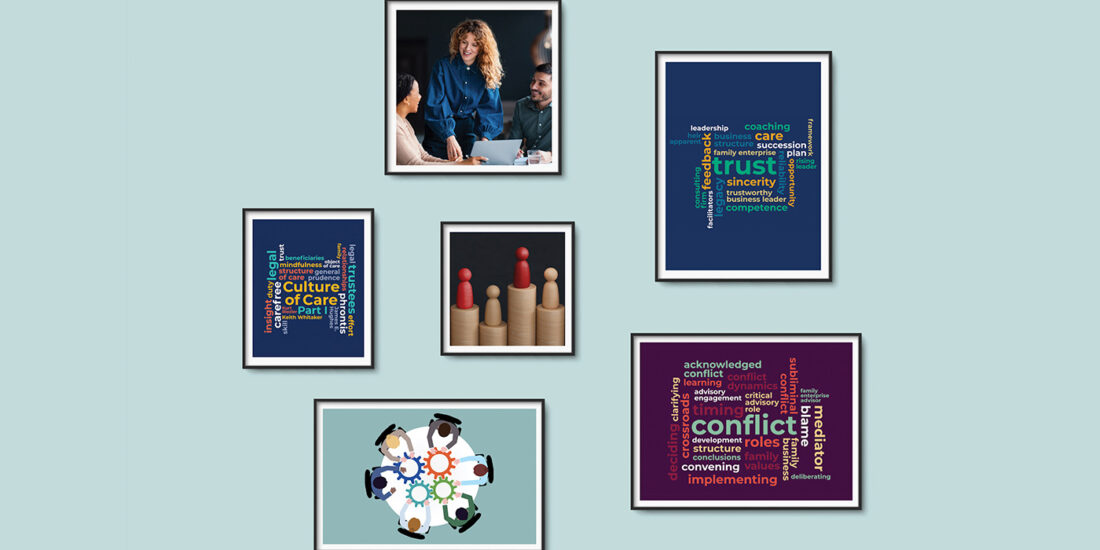Agency, Stewardship and the Universal-Family Firm: A qualitative historical analysis
(Authors: Sarah Drakopoulou Dodd, Bruno Dyck)
Research Applied précis prepared by Judy Green, President, Family Firm Institute
When FBR was first published in 1988, a year which many business historians now consider to be the founding of the family business research field, there were virtually no conceptual models to guide authors, topics, or the general public in understanding this specialized intersection of business and family. Prior to 1988, research on the topic was, for the most part, a subset of either entrepreneurship or family systems theory. Today the field is well established with conceptual and theoretical models and cross-referenced data, as scholars from around the world try to understand the impact of family enterprise on the global economy and the functioning (or not) of families who are in business together.
Few serious practitioners and hardly any scholars are unfamiliar with the three circle model, Bowen theory, or agency and stewarship theories as they are applied in the family business field. Yet, in the last few years there has been a longing, if not a clamoring, for new models. Nearly 30 years on, so the thinking runs, there must be new ways of looking at this segment of the economy.
Fortunately some new models have appeared, notably the Goodman study on longevitiy which has challenged the 30-13-3 model with new concepts of succession and transition. For more information see:
Another new model, borrowed from management, is Social and Emotional Wealth (SEW). See Practitioner précis on the FBR article on this topic in September 11, 2012 issue.
While interesting and extremely useful, neither of these new models has approached what may be the most critical topic in the field today, i.e., what constitutes a ”family firm” in the ongoing discussions and research papers. For the most part, with a few expansions of the boundaries for in-laws (“married-ins” is the current phrase) and adoptions, the underlying model has been the ”kinship” family firm, roughly defined as “family-ness based on biological relationships.”
Now finally — a new (or is it old?) family firm model – the “Universal-family firm.”
Drawing on the writings of Aristotle and the author of the Gospel according to Luke, the authors analyze the meaning of family and business and the related business and personal behaviors as they were conceived centuries ago. This is no small task, and the authors’ devotion to ur-texts and “original” languages is impressive. Nonetheless, what do family firms look like if their definition is not based on bloodlines? (See Figure 1 for the organizational typology which the authors developed while exploring this issue.)
The authors offer a working definition of the “Universal-family firm” as:
…an organizational ideal-type that emphasizes aspects of stewardship and value creation that have been associated with family firms, while avoiding agentic and exploitive tendencies that have been associated with formal kinship ties of blood or law. It is a Universal-family firm in that, even though its members are not related to each other by blood, it is characterized by having other-focused, inclusive, long- term relational qualities typically associated with family firms, plus an emphasis on socio-emotional wealth that goes beyond the organization’s stakeholders. (p. 315)
This working definition then leads the authors to posit (with Aristotle) that people in general tend to believe that increasing financial wealth is the purpose of managing goods and services producing organizations, and as a result “the whole idea of their lives is that they ought either to increase their money without limit, or at any rate not to lose it. The origin of this disposition in men [sic?] is that they are intent upon living only, and not upon living well; and, as their desires are unlimited they also desire that the means of gratifying them should be without limit.” (Aristotle, Politics: Book I, IX; italics added) (p. 316)
So… you can see where this is going. If one uses the conceptual model of the kinship family firm, it’s hard to see a distinction in the motivations and strategies of public and private companies. Both are working to create shareholder value in the broadest sense, although the shareholders are circumscribed by bloodlines in the traditional concept of the family firm. Focusing on bringing value within bloodlines creates a society where many people are marginalized and possibly forced to remain in less affluent societal segments.
Moreover, within the kinship family itself, family members may be reluctant to leave home and family (kinship) behind to seek the greater good of the larger society (oikos).
Taken together, the Universal-family oikoi described in Luke can be seen to follow four hallmark principles: (1) include the marginalized; (2) practice benefaction rather than patronage; (3) exemplify servant leadership; and (4) enact salvific organizational practices. (p. 321)
Challenging? Yes, but in the end that is probably not the point from a research perspective. The point, rather, is that finding a variety of ways to understand the family firm beyond the kinship and nuclear family model is long overdue.
Other parts of this paper deal with agency and stewardship theory and how they are sometimes seen as opposing forces under a kinship theory of family firms and how the Universal-family firm obviates some of that opposition. This is not a paper for the faint-hearted, but there is much to be learned from reading it in its entirety.
From the practitioner’s point of view, however, and for the further development of the field, these closing comments from the authors are the most significant:
In particular, we ask: “What is family business beyond biological kinship relationships?” The distinction between Universal-family firms versus kinship family firms (and/or conventional firms) invites and compels family business scholars to examine hallmarks of family-ness beyond biological relations. This is no easy task, but tackling it promises to bear fruit in terms of richer conceptual and theory development in the literature. Note that such reconstruction of the meaning of family—namely, for it to have more of a sociological than a biological meaning—is entirely consistent with the changing meaning of family in society at large (e.g., blended families, homosexual marriage and parenting, etc; Braithwaite et al., 2010; Marcianna & Sussman, 1991). (p. 326)
About the contributor
 Judy Green, Ph.D., is the president of the Family Firm Institute, a frequent commentator in the field, and the recipient of the 2008 FFI Barbara Hollander Award. She can be reached at judy@ffi.org.
Judy Green, Ph.D., is the president of the Family Firm Institute, a frequent commentator in the field, and the recipient of the 2008 FFI Barbara Hollander Award. She can be reached at judy@ffi.org.




